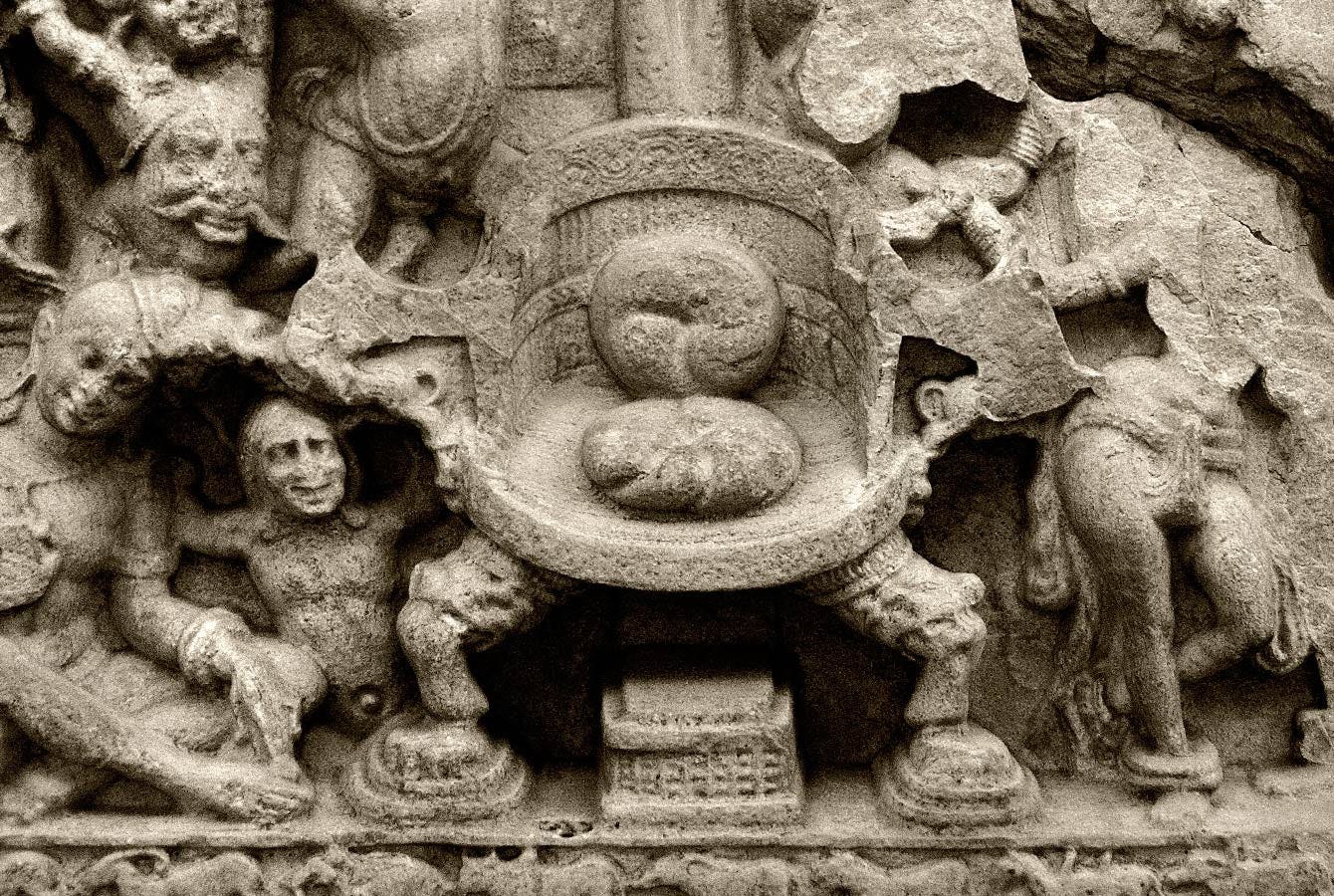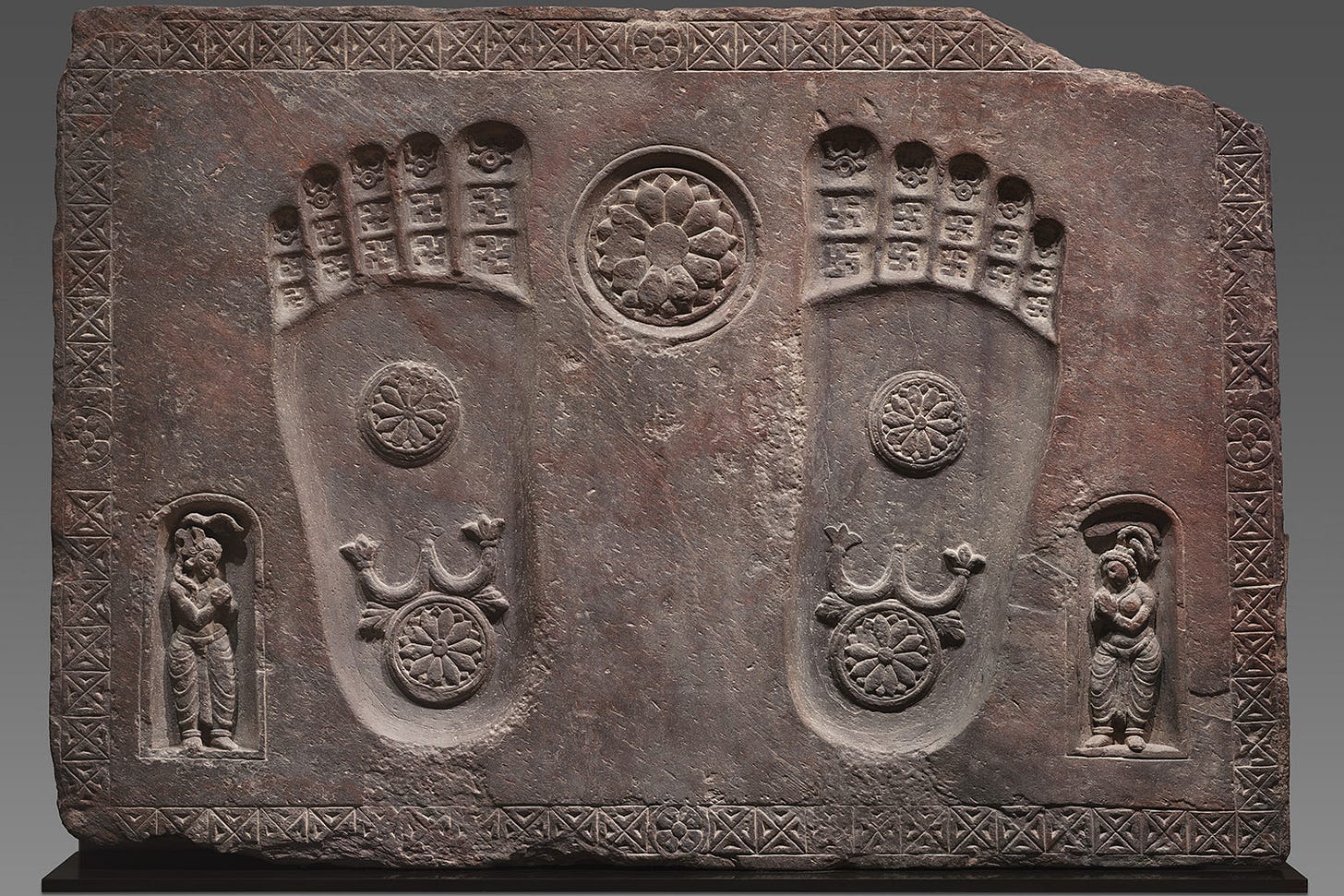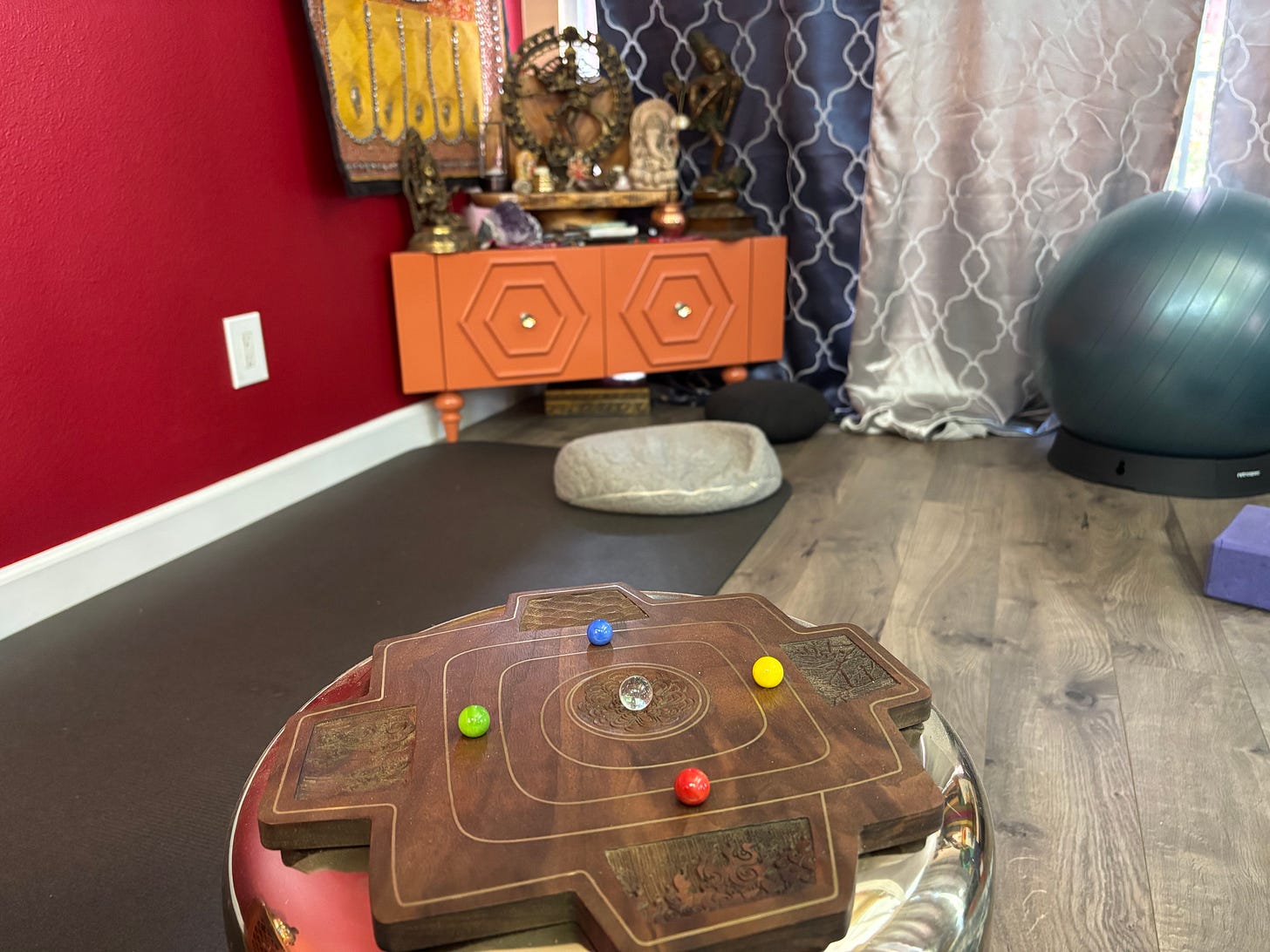We’ve just traveled through a full moon Vesak, or Buddha Day! Yesterday’s celebration (depending on the tradition) commemorates the Buddha’s enlightenment, birthday, and day of death.
I have some thoughts arising about the relationship between fear/anxiety and the dharma teachings represented by the "empty throne" image above, the footprints in the sand (below) and the mandala-inspired artwork at the bottom of this email. (Blessings from Sangha!!)
But before I go on, I want to share an offering from the Heart Mind and Neurodynamic Institute folks – an interview series on strategies to rewire fear and anxiety, enhance focus and clarity, and build lasting emotional resilience. This series, the 2025 Rewiring Fear & Anxiety World Summit is not Buddhist per se, but is obviously very aligned, and was designed by long time Power of Meditation speakers Fleet Maull and Michael Stone... both very good folks!
And now, back to the aniconic images, and how the Buddha's teachings can offer remarkable spaciousness around the anxieties and fears that most haunt you...
The image above is what is often called an “aniconic” image of the Buddha, called Mara's Assault, or the Empty Throne. It depicts the seat that the Buddha took throughout the night prior to enlightenment, but does not depict the Buddha, for important reasons.
As the Buddha sat throughout the night, committed to awakening on behalf of all beings, he was haunted by the swirling forces of the demon Mara. The most important awareness that the Buddha had, as he faced Mara, symbol of his own terror, was his insight into the insubstantiality of all arisings. The “demon” Mara is an icon of all Siddhartha's fears and mental projections.
Mara is also symbolic of the anxieties, fears, and mental projections that any meditator may confront at the most fraught moments on the path. With enough time on the cushion, we will all wander through great chasms of terror, particularly when moving through the rising and falling of undigested traumas. The deepest fear, it is said, is the ego’s resistance to its own dissolution, and that fear is the final obstacle to total freedom.
Ultimately the Buddha, with the earth as his witness, prevailed, and saw through haunting ghosts of the night. As the Buddha looked through the eyes of compassion, the forces that once haunted him became insubstantial, and drifted, cloud-like, into oblivion. The Buddha touched down into his core awakeness, śunyata, the essential emptiness that can arise as anything at all. In doing so, he became a touchstone himself; a beacon of luminous compassion to all beings throughout all times. In becoming the spaciousness of the center, he left us not just the story of his awakening, but a refuge, a path; footsteps to follow in.
The Buddhapada (Buddha's footprints) is another auspicious symbol that was used for the aniconic representation of the Buddha.
Understanding this path intellectually is not the same as walking it. We will continue to encounter fears and anxieties, even with much study, much "understanding". The mind will continue its swirl.
In the midst of mind demons, which are both deeply real and yet not real at all, we will find that healing and awakening depends upon our capacity to be present. The key seems to be breathing, and staying open to the experience of whatever is arising -- without getting too caught up in the meanings that the mind makes about whatever is arising.
I hope these thoughts are helpful for you. May you be blessed by profound spaciousness, deep breaths of compassion, and the teachings. And always, always, may you seek and find the support of companions on the path.
We don’t know what’s going on here. If these tremendous events are random combinations of matter run amok, the yield of millions of monkeys at millions of typewriters, then what is it in us, hammered out of those same typewriters, that they ignite? We don’t know. Our life is a faint tracing on the surface of mystery, like the idle, curved tunnels of leaf miners on the face of a leaf. We must somehow take a wider view, look at the whole landscape, really see it, and describe what’s going on here. Then we can at least wail the right question into the swaddling band of darkness, or, if it comes to that, choir the proper praise.
— Annie Dillard
Aniconic Mandala Art by Thessia.
Note that the central wisdom light is clear.







